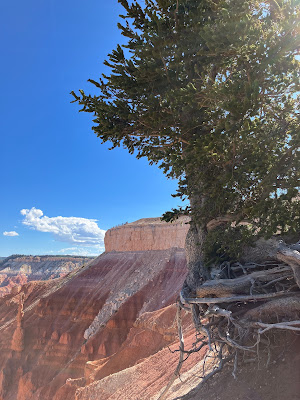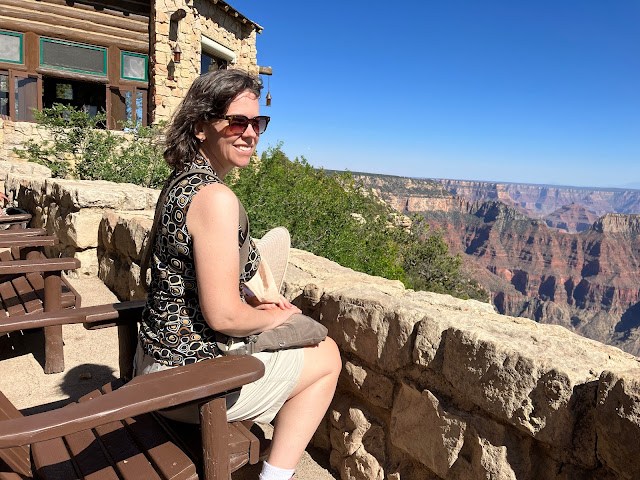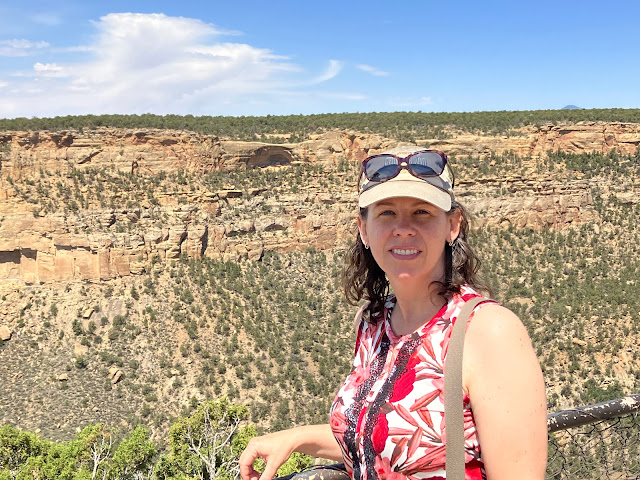As we headed through the mountains to our next destination, dark clouds started gathering. We arrived at Point Supreme Campground in Cedar Breaks National Monument and knew we would have only moments to set up some shelter before the downpour. It's a big tent with a lot of complicated parts -- it usually takes us about an hour or so to get it all set up. This time, running at full speed we managed to get it completely set up in less than 30 minutes -- a new record!
Which was a really good thing, since we had only a minute or two to spare. As soon as we were inside, it started pouring and didn't stop for about two hours! Luckily I'd grabbed our bags with our e-readers so we could at least do some reading while we waited for the rain to subside.
Once the skies cleared, we did a little bit of exploring by car to see the views into the amphitheater. Cedar Breaks is near the top of the "Grand Staircase" -- exposed layers of rock that begin at the base of the Grand Canyon, up through the formations of Zion National Park, and ending up at about the same elevation as those at Bryce Canyon. It really does look like a smaller (and less crowded!) version of Bryce Canyon because both parks are part of the Claron rock formation. The rocks are a similar orange-red, and the same weathered "hoodoo" formations can be seen at both parks.
We just happened to arrive at Cedar Breaks for their Wildflower week -- it seemed like the entire park was in bloom with a huge variety of wildflowers. We made sure to go on a ranger-guided wildflower walk so that we could learn all the names of the flowers we were seeing everywhere.
Which I promptly forgot, of course! I did look this one up -- it looks like a Variable Checkerspot butterfly pollinating some kind of yellow Cinquefoil flower.
There were so many flowers that even our ranger was stumped for the names of some of them. The only one I still remember without looking it up is the Colorado Columbine. On other hikes we saw lots of white ones and even a few lavender-blue ones.
We did two long-ish hikes while we were in the park. the first one was the Alpine Pond loop trail. While it didn't have many views of the canyons or ridges, there were tons of trees and wildflowers to look at. And as its moniker would suggest, it did lead to an alpine pond.
On our second full day in the park, we did the more strenuous South Rim Trail to Ramparts Point. From this hike we had spectacular views of the entire amphitheater. It was truly breathtaking and one of my favorite hikes.
One other unique feature of the Ramparts hike was walking through the ancient Bristlecone Pines at Spectra Point.
Bristlecone Pines are some of the oldest living things on Earth -- some of the trees here are over 1500 years old. They thrive in the most extreme conditions where other trees can't grow -- windy, arid areas with poor soil.
Cedar Breaks is definitely one of the hidden gems of our National Parks system. It gets less tourism attention than the larger parks in this part of Utah (Bryce Canyon, Zion) but it was well worth a visit and we really enjoyed our time here.




















































